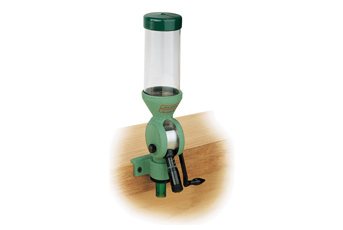Reloading: Weights and Measures
- By Wheelwrite
-
17
 Comments
Comments
- Last updated: 16/12/2016

Let’s take a fresh look at weights and measures. Accurate measurement of case dimensions, propellant weight, bullet weight and velocity are at the heart of safe and successful handloading. Here in the UK we base almost all our weight measurements on the grain and thanks to the American origins of much of our data, still remain loyal to the inch and foot.
HISTORICAL ROOTS
The bizarre history of the grain as a unit of weight is worth a mention. Yup, it really is based upon a grain…. of barley! The grain or Troy Grain (gr. or gn.) measure has been defined in terms of units of mass in the ISU (International System of Units) as precisely 64.79891 milligrams, making one gram equivalent to approx 15.43235829 grains.
In jewellery the grain unit was sometimes used in the measurement of precious stones, being exactly a quarter of a carat. However, to meet today’s needs for greater accuracy the carat is subdivided into points, a point being 1% (100th) of a carat. Better known, and of greater relevance to us, there are now exactly 7000 grains in one pound avoirdupois.
That’s a useful ‘modern’ rounding from the 12th Century 5400gn Tower pound (of 12 ounces) and the 14th Century 6992gn pound. The smallest fraction of a grain that most mechanical and electronic powder scales can reliably measure is one tenth of a grain or one 70,000th of a pound. As a rough numeric guide to weigh out, there are approx 31 kernels of H4227 rod propellant to a tenth of a grain. That’s just under 2.2 million in a one pound tub, count them if you like!
MEASURE FOR MEASURE
Mechanical and electronic scales differ in one important way, the mechanical operating as a comparator whilst the electronic gives an actual weight. To illustrate the effect of this difference, consider using both systems to batch weigh cases. With the electronic scale you can dispense with the pan, zero the unit and then read off the weight of each case as it is settled on the pressure pad… easy. With the mechanical scales you will have to retain the pan in order to keep the zero, fiddle with the tenth bar and then allow the beam to settle before reading the weight of each case… not easy.
Nonetheless, for precise powder charging I still prefer a good old beam system, setting the powder measure to throw a slightly low weight and then trickling the remaining half of a tenth or so, remembering to gently tap the beam in order to force it to pivot and re-settle. The pressure cell in some electronic scales can be rather insensitive to very small incremental increases in weight such as the feed from a trickler. When recording very small charges it is not uncommon for the readout to jump by more than a one tenth increment.
VOLUME OR WEIGHT?
For a given material under controlled conditions such as STP, it’s mass to volume (density) is a consistent value. For water we know that 1cc (volume) weighs 1gram (mass) as it has a density of 1,000Kg/m³. However, no two propellants have the same density. Indeed, the density of the same propellant can vary from one batch to another. For this reason your powder measure is designed to throw volume rather than weight. Any calibration numbers that appear on the barrel are only a reference aid to speed set-up between powders.
Density now becomes the issue with your powder measure.
A small amount of powder X in the bottom of the hopper will have a different density to the same brand filled to the top and thoroughly settled. As a result, the weight of the thrown charges will differ. Measures must always be kept well topped up for best consistency. In order to settle the powder in the measure it is wise to throw a dozen or more charges into the pan and return them to the reservoir before commencing reloading.
SIZE MATTERS
Checking bullet diameters, case dimensions, COL (cartridge overall length) chamber and bore sizes requires a suite of quality measuring instruments. As a minimum the handloader needs a 0 - 1” clutched outside micrometer and a switchable electronic imperial/metric vernier caliper. Stay away from cheap plastic measuring tools - they’re generally imprecise and easily prone to damage. If you’re going to take case prep seriously then you’ll also need a ball micrometer.
For anoraks like me, the catalogue of specialist measuring tools just gets bigger and better. Concentricity gauges come in a wide range of styles and prices and must be an early addition to the bench of anyone seeking optimum accuracy. The Sinclair Concentricity Gauge with a dial indicator is simple to use and does what it says on the tin. Different makers have a diversity of design ideas about chamber length gauges. If you’ve only a couple of different calibres then the Sinclair insert tool system is fine, for the rest of us the Hornady kit will do. From RCBS we now have calibre specific micrometer headspace/seating depth gauges - I must get one to try. As a multi-role tool that checks die setup, concentricity, bullet uniformity and headspace the Redding Instant Indicator is the elegant but expensive solution. For all of this stuff, the rule is simple; thousandths of an inch will make all the difference.
